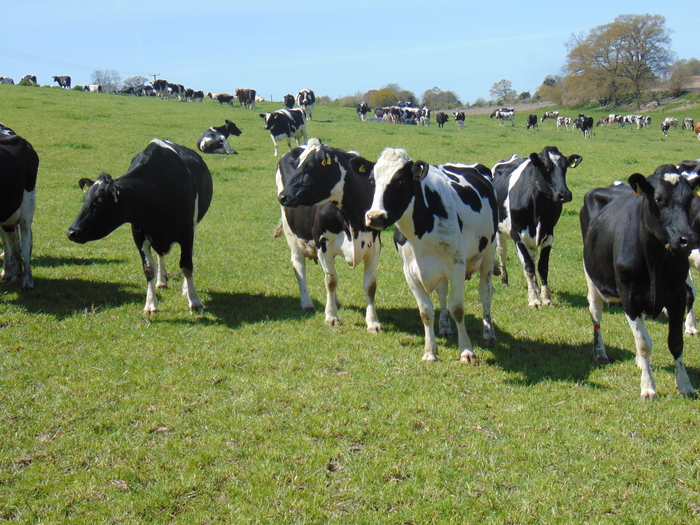Dairy farmers must take early action to help them develop strategies to successfully navigate a number of challenges which will affect financial returns in the next few years according to Promar International.
Announcing the latest results from their Farm Business Accounts (FBA) service, the most comprehensive analysis of actual dairy farm financial performance available in the UK, National Consultancy Manager Nigel Davies warns that although the year to March 2018 showed improved profits, the prospects for 2019 and 2020 are less positive and there are a number of key actions that all producers need to consider.
“The results to March 2018 show a profit after depreciation of £96,318, significantly up from the £53,130 recorded to March 2017,” he comments. “As a barometer of volatility, this profit was over 30% above the average achieved in the last five years, only surpassed by the 2013-14 results.
“Total variable and overhead costs increased by 6.9% and 5.6% respectively, but critically as far as driving profits were concerned, the average producer in the sample increased total milk output by 74,009 litres, keeping four more cows and producing an extra 188 litres per cow, without increasing feed usage.
“This, in conjunction with an average milk price increase of 2.86ppl diluted the impact of cost increases, resulting in in profit after depreciation per litre rising from 3.09ppl to 5.38ppl.”
Mr Davies stresses that profitability is only half the story when managing a business’s finances. Other ‘cash’ costs including capital expenditure and non-trading items such as drawings and debt repayment need to be accounted for. Despite being a year with a higher than average profit, the average farm made a cash deficit of £85,152 before any new capital introductions. Consequently, total liabilities rose by around £18,000 to £563,310.
Mr Davies says the projected profit for the year ending March 2019 is influenced by the challenging weather in 2018 and a number of deteriorating market factors . Consequently, he forecasts that profits for the current financial year will be lower than the five year average and also less than half the average profit to March 2018.
“While we have seen an essentially level milk price across the year so far and a continued increase in herd size and yield per cow, rises in feed costs due to increased usage and higher prices coupled with increased overheads will impact materially on profit and the balance sheet.
“We anticipate profits will remain under greater pressure in the year to March 2020 and believe farmers need to start planning now to minimise the impact of several major pinch points.
He says the first pinch point is the impact of price changes. Feed prices are currently £24/t (11%) higher and there are clear signals that milk prices will come under pressure. Rising oil prices will push many overheads higher. Furthermore the higher profit achieved in 2018 will work through to a higher tax bill for many which will fall due this year placing a further cash demand on the business..
“Farmers need to understand the impact of these factors on their borrowings, particularly looking ahead to Spring 2019. With all banks now looking more sharply at full farm viability, steps should be taken to put adequate cash facilities in place in good time, being proactive rather than reactive.”
The second potential pinch point is forage and he says stocks may take until late on 2020 to be adequately rebuilt to comfortable levels. .
“Thirdly, global political uncertainty remains a concern. It is already impacting on dairy commodity prices and we have still to learn the impact of Brexit in terms of tariffs and exchange rates. To this must be added the likely changes to support payment schemes which currently equate to a total of 1.91ppl for the average farm in this sample. Fully offsetting support payment changes will require increased efficiencies across the business.
Finally ’dairying’ related inflation will not slow in the coming years, with added pressure in particular on wages, feed costs and most overheads. For a number of producers, there are fewer replacements in the pipeline and the poor spring and challenging summer will have adversely impacted herd reproductive performance and hence future milk output meaning the dilution effect on costs of producing more milk will be reduced.
To build more sustainable businesses, dairy farmers must continue to drive technically efficiency and fully embrace the use of financial management information. Managing people and managing animals will be two key areas for attention.
He says here remains a wide disparity in the quality of calf management, youngstock management, milk quality and herd reproductive performance, all of which impact hugely on profitability.
People on farms are key. Effective people management is not just about costs, although the top 25% in our sample achieved wage costs 23% lower average. Staff management is an overlooked skill and must embrace training and development, delegation, motivation and communication of everyone in the team. With current labour shortages, being a good people manager could be the difference between having someone to milk your cows or not.
“And don’t forget the external members of the team. The better producers work more closely with their vets, consultants, contractors, accountants etc than the average and there is room for most producers to improve in this area.
“Implementing changes and improvement can take time, but they happen most successfully when businesses have the best possible financial information to hand and are prepared to regularly step back from their businesses and take an alternative view.”


